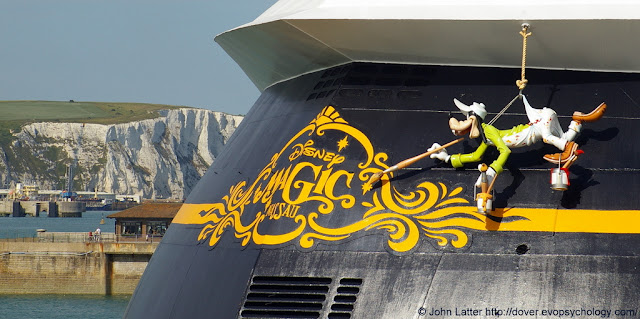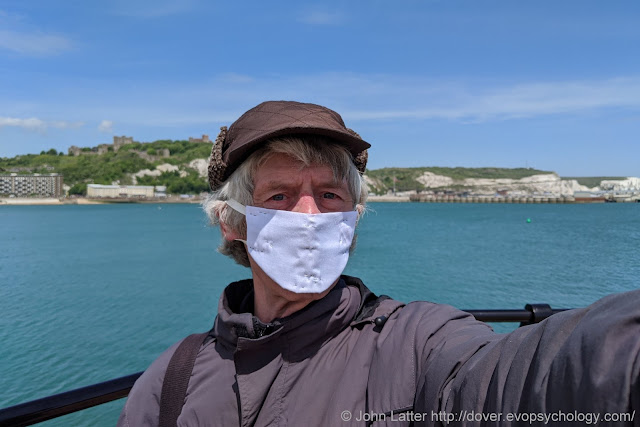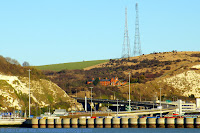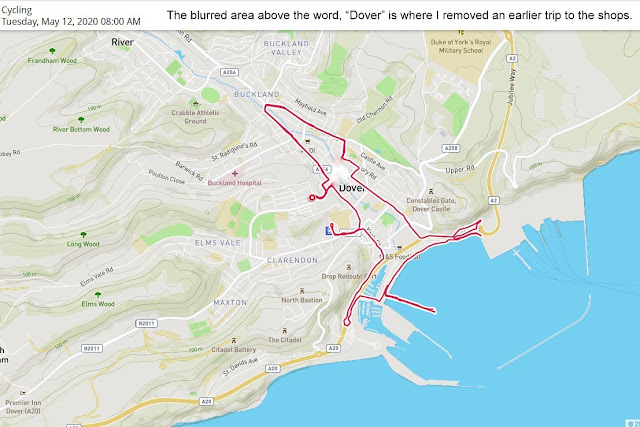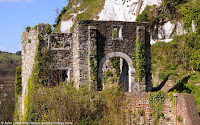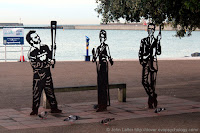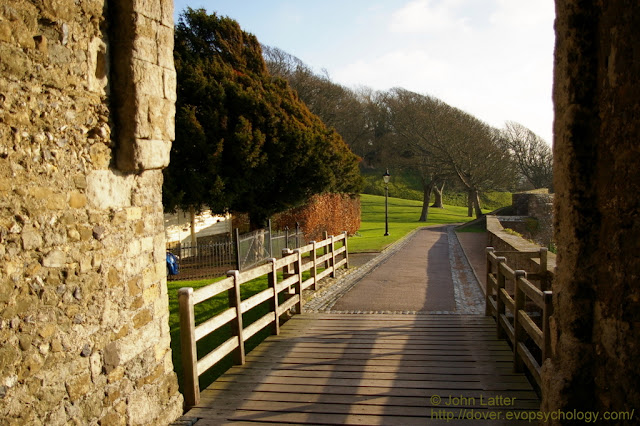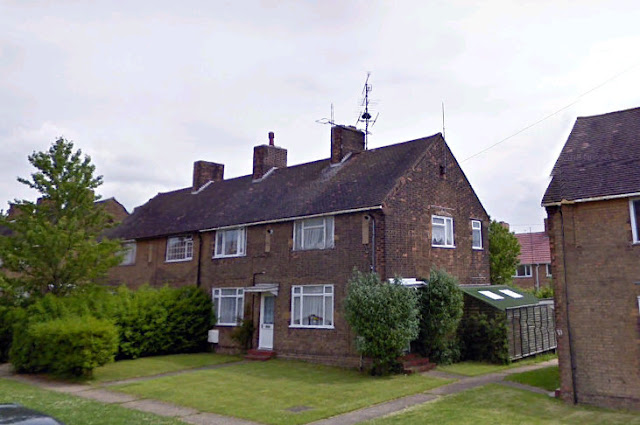Original post:
A zoomed snapshot of 900 yards showing Disney Cruise Line's MV Disney Magic passenger cruise ship soon after her arrival in the Port of Dover, Kent, England on Tuesday, 19th of May, 2020:
 |
| View from A20 Limekiln Street across Crosswall Quay to the MV Disney Magic. |
The ship wasn't carrying any passengers because of the Coronavirus pandemic on cruise ships and the travel restrictions that were subsequently imposed.
However, the MS Disney Magic entered Dover harbour with crew members from the MS Disney Fantasy and the MS Disney Dream on board who are presumably awaiting repatriation.
Before proceeding to the live-update map of the MS Disney Magic's current position, and photographs of her during a pre-Covid-19 visit to Dover, note the green copper cupola projecting above the ship's stern:
 |
| Customs Watch House, South Pier. |
Customs and Excise officers from here went to the nearby Lord Warden Hotel (blog post) to interview Louis Bleriot (blog post) after the first flight across the English Channel in 1909.
The MS Disney Magic's current location is shown on this A.I.S ("Automatic Identification System") map:
The day after the first photo was taken, the MS Disney Magic moved to the cargo area of the Dover Western Docks Revival, thereby enabling this photo of Goofy on the ship's stern to be taken on the 21st of May:
And this is how Walt Disney's Goofy looked on the 6th of July, 2010, viewed from the Admiralty Pier with the White Cliffs of Dover (blog video) in the background:
:
'S funny how Goofy never seems to age... (😀)
Photos from the cruise ship's earlier visits to the Port of Dover:
The MS Disney Magic manoeuvering in the Western Entrance of Dover harbour on the 12th of June, 2010:
The MS Disney Magic, berthed against the Admiralty Pier of the Western Docks, and the Waasland Sea Barge, in port to remove the SS Spanish Prince WW1 block ship, on the 24th of June, 2010:
From the MS Disney Magic's homepage:
Created with your entire family in mind, the Disney Magic combines classic nostalgia and modern amenities with Disney’s signature service.
Step aboard for spacious staterooms that ensure everyone’s comfort.
Get lost in original Broadway-quality entertainment. Indulge in first-rate dining.
From bow to stern, set sail for unforgettable storytelling that only Disney could bring to life.
Ship's data (as of 2010):
Name: Disney Magic
Owner: Disney Cruise Line
Operator: Disney Cruise Line
Port of registry: Nassau, Bahamas
Builder: Fincantieri Marghera shipyard, Italy
Maiden voyage: July 30, 1998
In service: 1998
Status: In active service, as of 2010
Type: Cruise ship
Tonnage: 83,000 gross register tons (GRT)
Length: 964 ft (294 m)
Beam: 106 ft (32 m)
Draft: 25.3 ft (7.7 m)
Decks: 11
Speed: Cruising 21.5-knot (39.8 km/h), maximum 24 kn (44 km/h)
Capacity: 2,400 passengers
Crew: 945
Call Sign: C6PT7
IMO: 9126807
MMSI: 308516000
Covid-19 exercising: cycling route map and biometrics are on this Polar Flow web page.
Abridged versions of this post are also on Facebook and Twitter.

